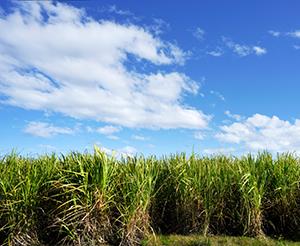Growing a New Solution

A researcher at Illinois says that one of the most productive crop plants ever known—sugarcane—can be modified to become even more viable and help reduce dependence on fossil fuels.
Stephen Long, professor of plant biology, and other researchers report that they can increase sugarcane’s geographic range, boost its photosynthetic rate by 30 percent, and turn it into an oil-producing crop for biodiesel production. The work is part of a larger initiative to turn sugarcane and sorghum into oil-generating plants.
Biodiesel can be created by pressing the oil out of plants, such as soybeans, and converting it to diesel—a process simple enough to do in your kitchen, says Long, a leader of the research initiative. Soybeans alone, however, aren’t productive enough to meet the nation’s need for renewable diesel fuels.
“Sugarcane and sorghum are exceptionally productive plants, and if you could make them accumulate oil in their stems instead of sugar, this would give you much more oil per acre,” he said.
Working first with the laboratory-friendly plant Arabidopsis and later with sugarcane, the team, which included scientists from Brookhaven National Laboratory, the University of Florida, and the University of Nebraska, introduced genes that boost natural oil production in the plant. They increased oil production in sugarcane stems to about 1.5 percent.

“That doesn’t sound like a lot, but at 1.5 percent, a sugarcane field in Florida would produce about 50 percent more oil per acre than a soybean field,” Long says.
“There’s enough oil to make it worth harvesting.”
Using genetic engineering, the researchers increased photosynthetic efficiency in sugarcane and sorghum by 30 percent, Long says. And to boost cold tolerance, researchers are crossing sugarcane with Miscanthus, a related perennial grass that can grow as far north as Canada. The new hybrid is more cold-tolerant than sugarcane, but further crosses are needed to restore the other attributes of sugarcane while preserving its cold-tolerance, Long says.
Ultimately, the team hopes to integrate all of these new attributes into sugarcane, he says.
“Our goal is to make sugarcane produce more oil, be more productive with more photosynthesis, and be more cold-tolerant,” he says.








